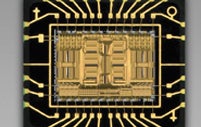We explain what the different types of autofocus are, and what each one means, including, AF lock, contrast-detect, continuous tracking, cross-type, manual and phase-detect
What do the different types of autofocus mean?
AF Lock
By locking a point of focus, the camera won’t assess any other areas or hunt around. You can then go on to recompose your image knowing that your subject will still be sharp.
Contrast-detect
Working off the main imaging sensor, this analyses contrast in a scene and determines focus by finding where there’s most contrast.
Continuous/Tracking
This follows a subject if it moves away from a focused position, keeping it in focus.
Cross-type
An AF sensor, usually comprising two individual sensors, that is sensitive to movement over two axes, usually along the vertical and horizontal.
Manual
This disables the camera’s autofocus mechanism, allowing the user to adjust it to their requirements, either by a focusing ring or through the camera.
Phase-detect
The standard method of autofocusing on a DSLR, which utilises a separate sensor, typically underneath the mirror.





